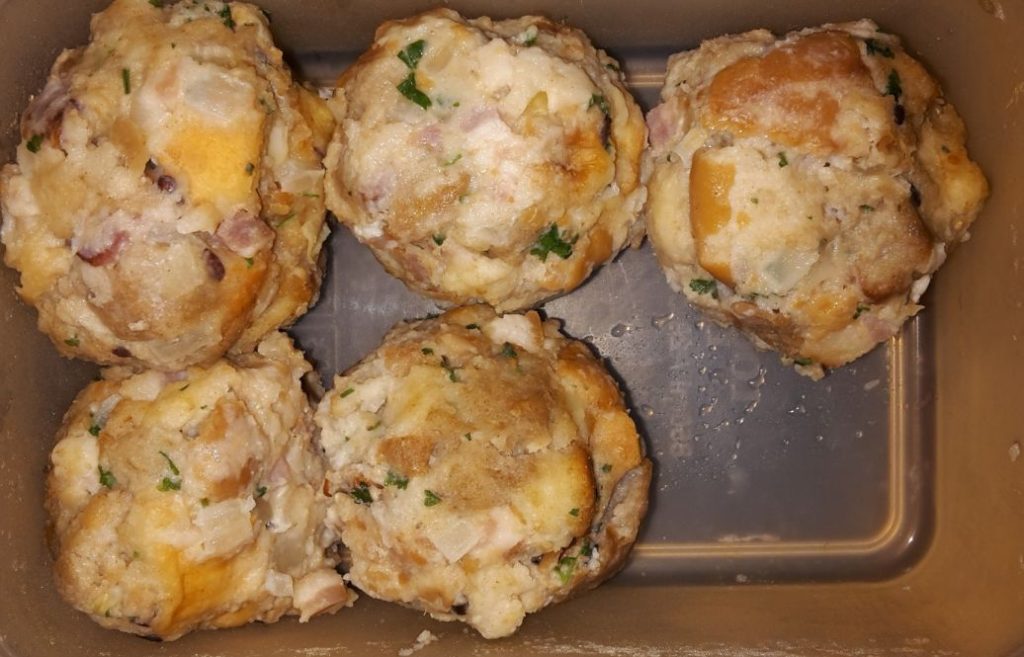Search the Blog
Latest Comments
Speckknödel!
[caption id="attachment_5086" align="alignnone" width="486"]
 Bread mix, soaking. As you can see, it's a wild mix of all kinds of different breads... which can be a little surprising sometimes, when there's suddenly some pumpkin seed turning up!
Bread mix, soaking. As you can see, it's a wild mix of all kinds of different breads... which can be a little surprising sometimes, when there's suddenly some pumpkin seed turning up!One especially delicious way to use up that bread are Speckknödel (bacon dumplings). I was first introduced to those in Austria, and they are wonderful. Wonderful. It's basically old bread soaked in milk and/or water to make it soft again, mixed with egg (to hold it all together), onion, and smoked bacon, seasoned with salt and parsley, and then simmered in water. Traditionally, they are served with browned butter; a salad goes along with them nicely, as does red cabbage, or some other cabbagy vegetable.
Here's the recipe I usually use - the amount of liquid you need may vary depending on your bread:
250 g dry bread, cut into small cubes (c 1 cm side length works very well)
250 ml milk (or half milk, half water)
2 eggs
1 medium onion (ca. 80 g)
2 tablespoons chopped parsley
80-100 g bacon (smoked bacon), diced
3 tablespoons flour (c 45 g)
salt
butter
Pour your liquid over the diced bread and let it stand for a while (at least an hour, so the moisture can spread out through the bread). Dice the onion finely, then sautee it until translucent. Mix onions and bacon with the moistened bread. Beat the eggs, add salt and chopped parsley, and add that mixture to the bread mix as well. Let sit for about 15 minutes.
In a sufficiently large pot, bring water to the boil. Add salt and turn heat down a bit. Form dumplings from the bread mix (I get about 12-14 dumplings from the mix) and gently place into the water; they should now simmer (not boil) for about 15 minutes.
Meanwhile, brown some butter in a small pan or pot.
[caption id="attachment_5087" align="alignnone" width="640"]
 Dumplings!
Dumplings!Serve dumplings with browned butter and salad, or another side. Leftover dumplings are very nice sliced up and fried in butter, or sliced up and eaten cold.
The water used to simmer the dumplings also makes a very nice base for a soup on the next day...
Comments 2
Those look delicious. I have a lovely recipe for what is essentially a cheese soufle-ish thing crossed with bread-recycling.
My main problem is that most modern, boughten bread just goes mouldy rather than going stale. And I'm not currently in a financial situation to buy expensive, artisanal bread or with sufficient spoons to regularly bake my own. *sigh*
We've noticed that different kinds of bread go mouldy at different speeds. The kind we usually buy (100 % rye sourdough) almost never develops mould before becoming so hard it's no fun to eat anymore. White breads go mouldy much quicker, though.
But... if you want to make bread-recycling recipes, you can always use almost-fresh bread (cut into slices or dice and let it sit in the open for a day or so). Or if the bread you buy gets mouldy faster than you can eat all of it regularly, chop up and dry some right away? Once it's dry, it will keep, and all it takes to adapt the common bread-recycling recipes, which are usually meant for not-completely-dry bread, is a little less liquid in the mix. (Or freeze some of it, cut in slices - if you prefer to have more edible, fresh bread...)



